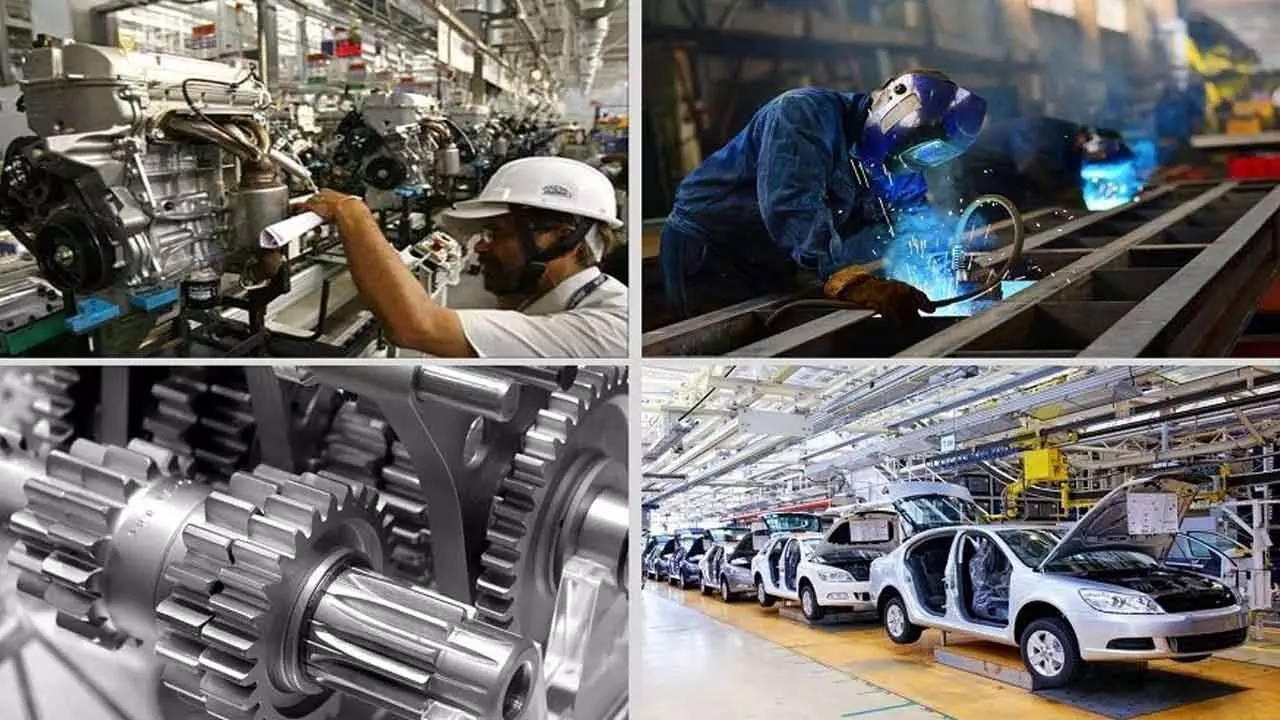National Manufacturing Mission
The mission is crucial to achieving India's ambitious target of $7.5 trillion in manufacturing GDP by 2047, which would account for 25% of the country's overall $30 trillion GDP goal. The announcement comes amidst a growing consensus that manufacturing must play a central role in India’s growth story, supported by targeted policies, coordinated infrastructure development, and an integrated approach across government and industry
National Manufacturing Mission

The National Manufacturing Mission, announced in the Union Budget 2025-26, aims to accelerate "Make in India" by providing policy support and roadmaps for small, medium, and large industries. The mission will focus on five key areas: ease of doing business, a future-ready workforce, a vibrant MSME sector, technology availability, and quality products.
It also includes provisions for clean tech manufacturing and fostering domestic production of specific components. The Mission will lay emphasis on five focal areas i.e. ease and cost of doing business; future ready workforce for in-demand jobs; a vibrant and dynamic MSME sector; availability of technology; and quality products. The Mission will also support Clean Tech manufacturing and aims to improve domestic value addition and build the ecosystem for solar PV cells, EV batteries, motors and controllers, electrolyzers, wind turbines, very high voltage transmission equipment and grid scale batteries.
"To become a developed nation, India must undergo four major transformations — a shift from rural to urban living, a clean and large-scale energy transition, a complete overhaul of our education system to empower individuals, and a manufacturing revolution that creates quality jobs and drives economic growth”, said BVR Subrahmanyam, CEO, NITI Aayog, while addressing the Annual Business Summit of Confederation of Indian Industry (CII) in New Delhi.
Subrahmanyam emphasized that the National Manufacturing Mission will be central to this transformation and states that “The Mission will serve as an overarching body—one that not only guides and aligns efforts across ministries, but also ensures that our policies, incentives, and actions speak to a single, unified vision for India’s manufacturing future.” The mission is crucial to achieving India's ambitious target of $7.5 trillion in manufacturing GDP by 2047, which would account for 25% of the country's overall $30 trillion GDP goal. The announcement comes amidst a growing consensus that manufacturing must play a central role in India’s growth story, supported by targeted policies, coordinated infrastructure development, and an integrated approach across government and industry.
A key focus of the Mission will be to build enabling infrastructure that goes beyond general connectivity. Subrahmanyam highlighted that “General infrastructure has laid the foundation – our highways, ports, and digital networks have opened up connectivity like never before. But to translate this into manufacturing excellence, we now need targeted industrial infrastructure. This means dedicated industrial parks, sector-specific clusters, integrated logistics zones, and reliable power and water supply”. These are the enablers that will power manufacturing zones, enhance productivity on the ground, and make India a truly competitive and attractive destination for global investment. Skills development is another cornerstone of the strategy, particularly for small and medium enterprises (SMEs), which are critical to inclusive growth. “Empowering medium and small firms with targeted skill development is essential. These firms form the backbone of manufacturing and innovation, and upskilling their workforce will drive productivity, foster entrepreneurship, and create inclusive growth across the sector.
Global competitiveness also features prominently in the Mission’s vision. Subrahmanyam said that “Integrating effectively into Global Value Chains means delivering the right product, at the right quality, to the right market, at the right time. This precision and efficiency are crucial for India to become a trusted and competitive manufacturing hub on the global stage.”
Leaders from industry welcomed the initiative, while calling attention to key areas of reform. Sanjiv Puri, the then President, Confederation of Indian Industry (CII), said that “As far as Ease of Doing Business and regulations are concerned, there is no doubt that India has made a lot of progress. But equally, there is still a lot of distance to be covered. Regulatory issues and timeliness of initiatives might sometimes become a challenge in our country's federated structure, especially in the manufacturing sector, which may need to be looked at and resolved.
Highlighting the role of industry in supporting the Mission, CII’s Director General Chandrajit Banerjee outlined collaborative skilling and employment initiatives. He said that “CII plans to establish numerous multi-skilling centers nationwide, in partnership with local associations. Additionally, private employment exchanges will be set up to provide finishing training and facilitate workforce placement in the manufacturing sector." He further stated that “As we expand manufacturing’s share in the economy, it’s important to engage all stakeholders from small firms to large enterprises to collectively drive innovation, productivity, and competitiveness.”
The National Manufacturing Mission is expected to be a game-changer—driving structural reforms, unlocking investment, building capabilities, and creating quality employment, while placing India firmly on the global manufacturing map. (Agencies)

